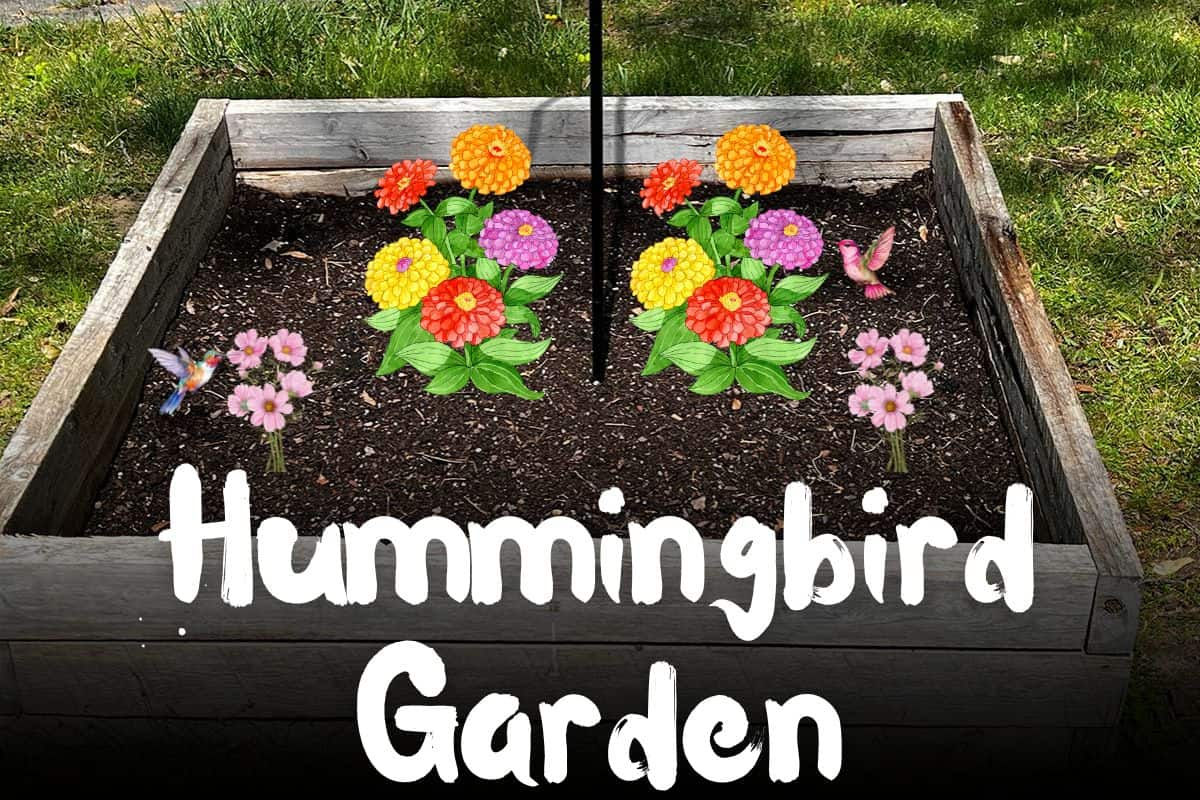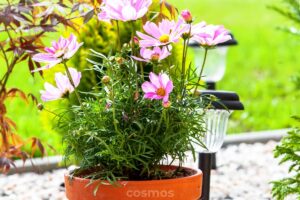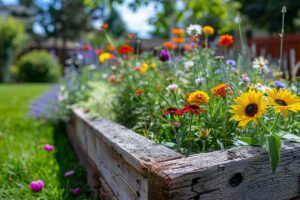This page may contain affiliate links. If you click and buy, we might get a small commission at no cost to you.
If you want to attract hummingbirds but don’t have a large yard, a small raised flower bed might be all you need. In this guide, we’ll walk you through how to make a hummingbird garden using just a 4×4 raised cedar garden bed, a mix of zinnias and cosmos, and a simple feeder pole in the center.
This setup is easy to replicate, low-maintenance, and specifically designed to bring in pollinators, especially hummingbirds and butterflies. It’s a great starter garden for beginners, especially if you don’t want to grow vegetables, and it adds a colorful focal point to any yard or patio.
Article breakdown
- Uses only two flowers: zinnias and cosmos
- Built in a 4×4 cedar raised bed, great for small yards
- Zinnias are the main attraction for hummingbirds and butterflies
- A shepherd’s hook feeder pole sits at the center for extra appeal
- Planted in mid-April with flowers expected to bloom in early summer
What is a hummingbird garden?
A hummingbird garden is a flower bed or planting area filled with nectar-rich plants designed to attract hummingbirds. These gardens typically include brightly colored flowers like zinnias, salvia, bee balm, and trumpet-shaped blooms that make feeding easy for the birds. Many gardeners also include feeders to give hummingbirds an additional nectar source.
Even a small garden can be effective for attracting hummingbirds if you choose the right flowers and place your feeder where they can easily spot it.
How to set up a 4×4 hummingbird garden
This was a simple project with just a few moving parts, but I still wanted to explain how we did it step-by-step in case you’re thinking of building something similar. You can follow this setup exactly or adjust it to fit your space, budget, or climate. What worked for us might need tweaking in your yard, but the core idea is flexible and easy to adapt. Here’s how we put it together.
1. Start with a garden bed (we used a 4×4 cedar box)
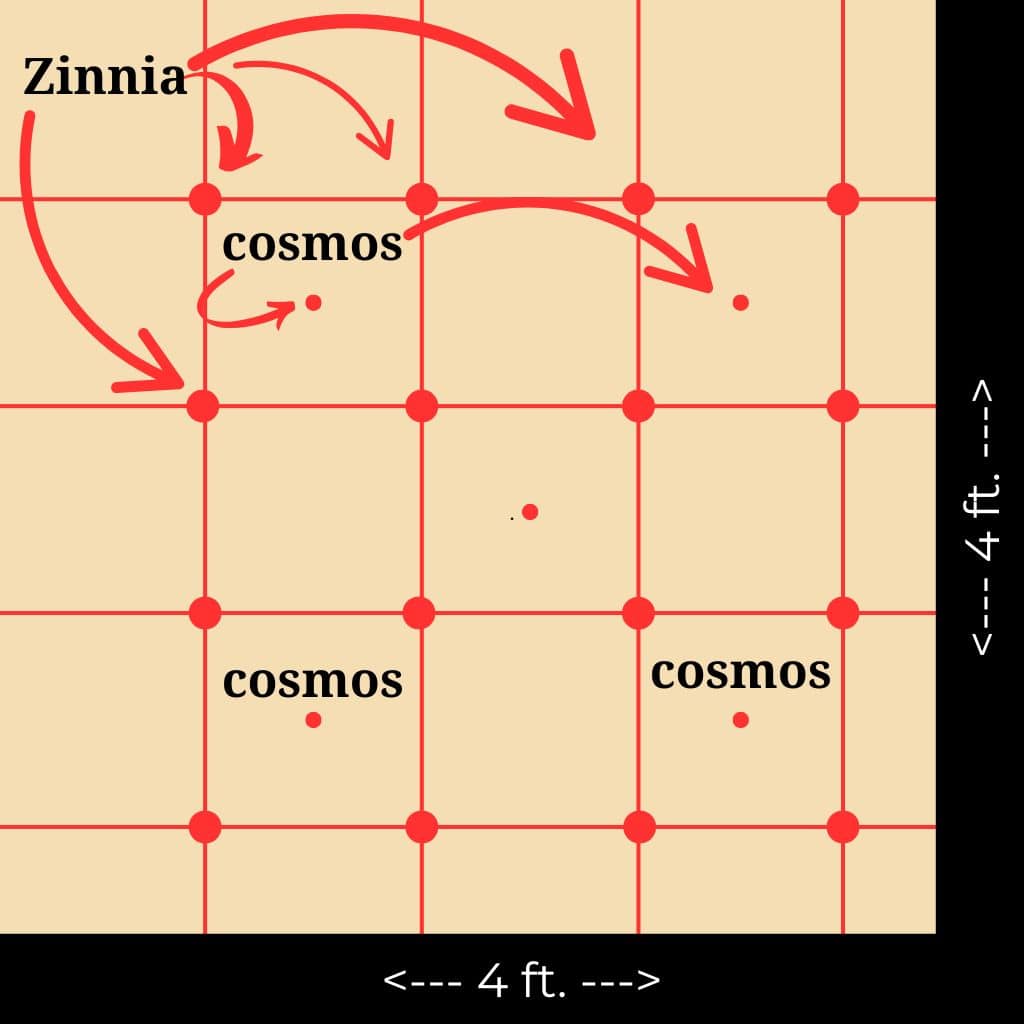
We built our hummingbird garden inside a 4-foot by 4-foot raised cedar bed. I found someone on Facebook Marketplace offering installation for about $150. He came over, quickly assembled the box, filled it with soil, and was done in under 30 minutes. If you’re short on time or tools, this kind of ready-made solution can be a great option.
Cedar is naturally rot-resistant, which makes it ideal for garden beds exposed to moisture. The raised format helps with drainage and gives you more control over soil quality, which is especially helpful if your yard has poor or compacted dirt.
If you can’t find one locally or don’t want to build it yourself, you can easily buy raised cedar beds and other styles online. Or, a traditional in-ground garden, a repurposed flower bed, or even a few large containers will all do the trick. Just make sure your spot gets at least six hours of direct sunlight a day. Zinnias and cosmos both thrive in full sun and won’t perform well in shade.
2. Plant your main flowers (we chose zinnias)
The star of my garden is the zinnia. We planted 16 of them in a clean grid; four rows of four to create a balanced, symmetrical layout that fills out the space without feeling crowded. Zinnias are among the best flowers you can grow if your goal is to attract hummingbirds and butterflies. They’re heat-tolerant, low-maintenance, and produce bold, colorful blooms that last for weeks.

We started ours from seed directly in the bed, using a mix of good-quality potting soil and native topsoil to give the seedlings a strong start. If you’re filling a raised bed like ours, avoid using just heavy garden soil. A blend that drains well and stays slightly loose will help roots establish faster and reduce the chance of rot or fungus issues.
You could also start with nursery plants if you want faster results, but either way, be sure to give them enough space. Zinnias need good airflow to prevent problems like powdery mildew, especially in hot and humid weather.
Pro tip: Choose medium or tall varieties like Benary’s Giant, Cut and Come Again, or California Giants for maximum flower size and visibility. Taller plants also naturally position themselves closer to hummingbird feeder height, which increases the chances of bird visits.
3. Fill the gaps with cosmos
To fill out the bed without overcrowding it, we staggered cosmos between each zinnia. This not only softens the look but also adds a second flower shape and texture to the garden. Cosmos have fine, feathery foliage and delicate daisy-like blooms that sway in the breeze and create movement in the garden.
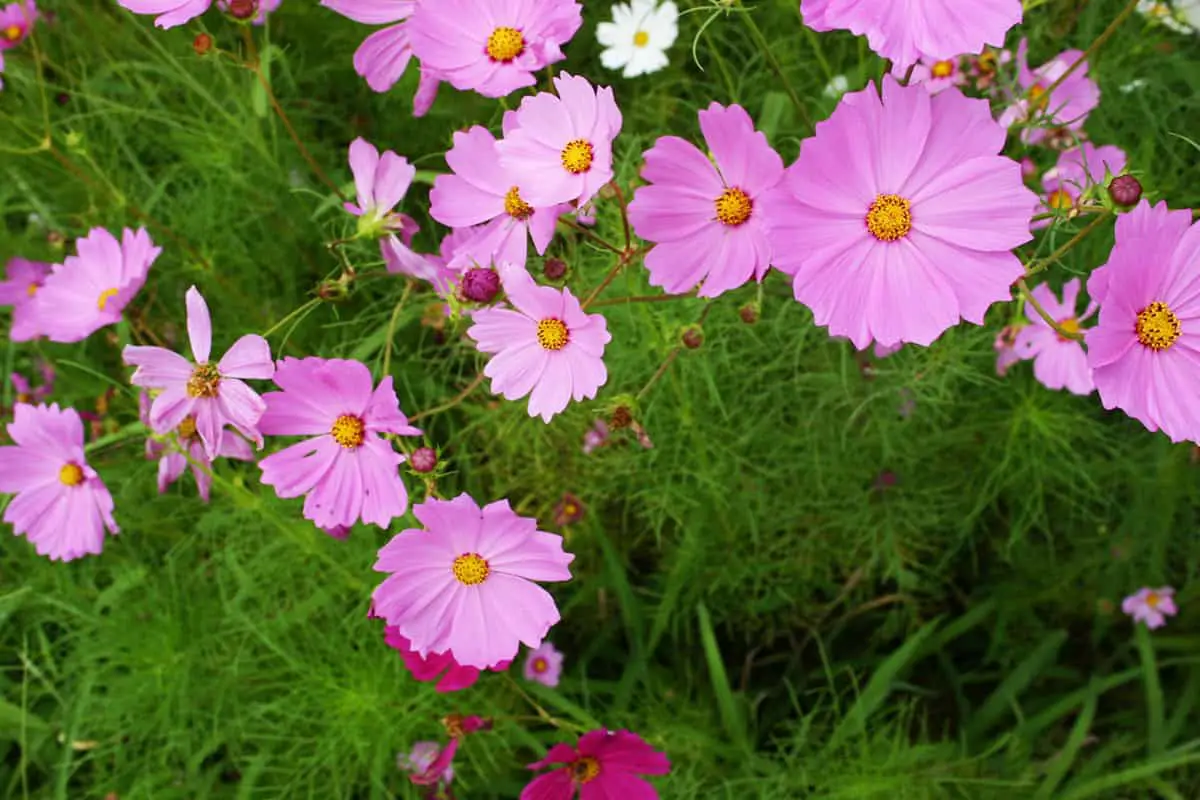
We used a classic cosmos variety known to attract butterflies and bees, and while they’re not quite as well-known for drawing in hummingbirds, they can still provide a nectar source if you’re using Cosmos bipinnatus. They also bloom earlier than zinnias, typically around 50 to 60 days from seed, which gives the bed some early color while the zinnias are still growing in. Planting cosmos also helps support pollinators in general, which contributes to a healthier garden ecosystem.
4. Add a focal point in the center
Right in the middle of the bed, we installed a black metal shepherd’s hook pole. This gives us a flexible centerpiece that we can use throughout the season. Our plan is to hang one or two hummingbird feeders on it to bring in extra bird activity, but you could also use it for hanging flower baskets or small garden decor.
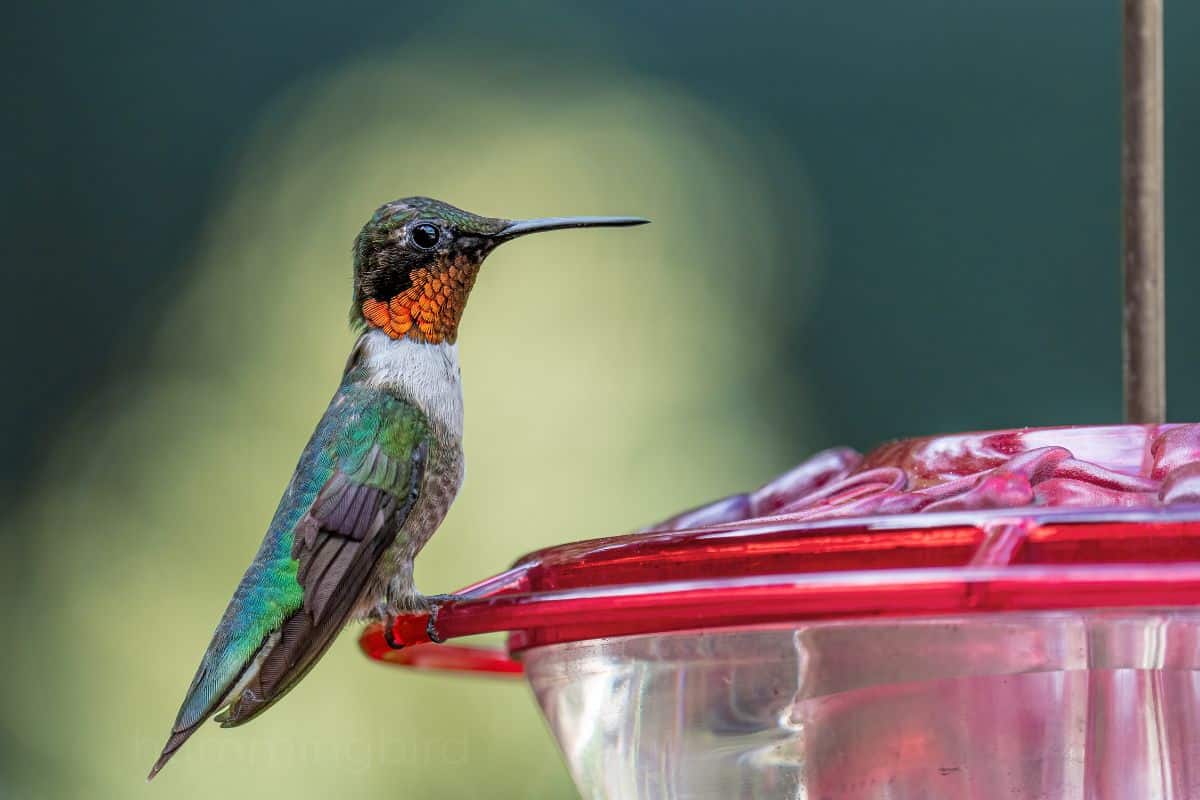
The vertical height of the pole creates a visual focal point that draws the eye and gives the garden some structure. Plus, positioning the feeder in the center makes it easy for hummingbirds to spot as they pass through. If you’re adding feeders, make sure they’re easy to remove and clean, and hang them at least 4 to 5 feet off the ground so the birds feel safe while feeding.
5. Know your bloom timeline
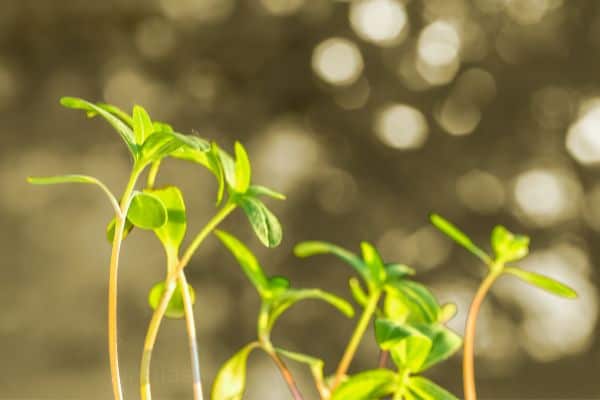
We planted everything in mid-April, which is generally a safe time to start warm-season flowers in our area. Zinnias usually take between 60 and 70 days from seed to bloom, so we’re expecting them to show color by mid to late June. Cosmos tend to bloom a little earlier, usually within 50 to 60 days, so we should start seeing them by early June if the weather stays warm.
Since this is a new garden for us, we’ll be watching closely to see how each variety performs and how soon the pollinators arrive. I’ll update this article later in the season with photos, lessons learned, and notes on what I might do differently next time. The goal is to have continuous bloom and hummingbird activity well into the summer and early fall. Last year I had zinnias blooming into November here in the Southeast!
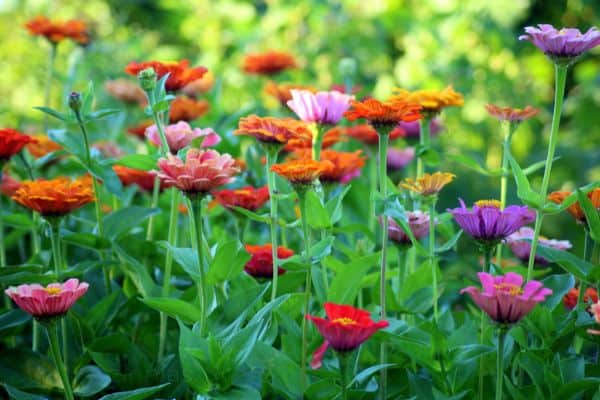
Final thoughts
Creating a hummingbird garden doesn’t require a ton of space or a complicated design. With a simple 4×4 raised bed like mine, two easy-to-grow flower varieties, and a feeder in the middle, you can build something that’s beautiful, functional, and buzzing with pollinators all season long.
This is a real garden we planted ourselves, and we’re looking forward to seeing how it matures over the next few months. Whether you’re starting your first flower bed or just looking for a fun project to bring more hummingbirds into your yard, this setup is easy to copy and fun to build. Check back later in the season for updated photos and garden progress.
